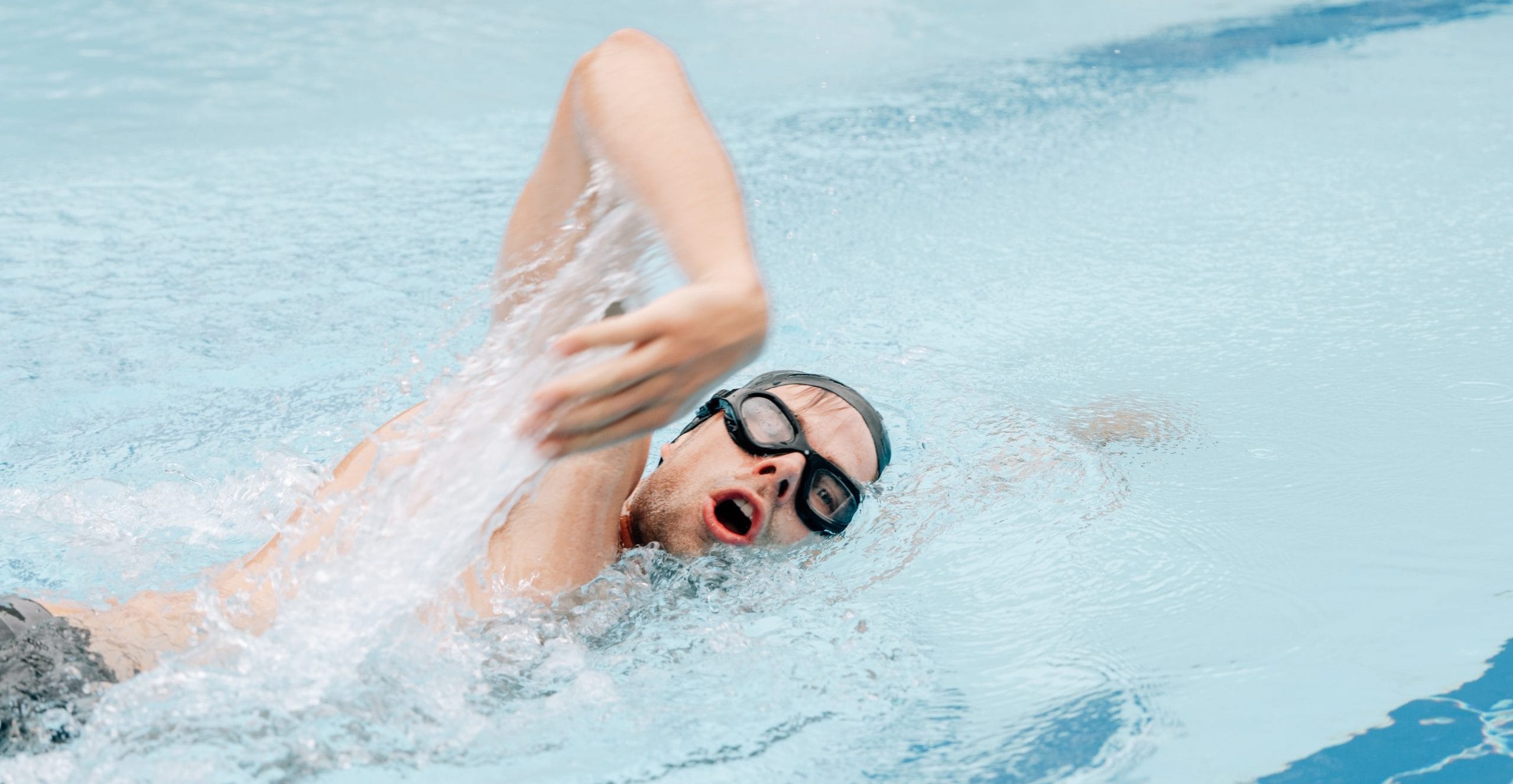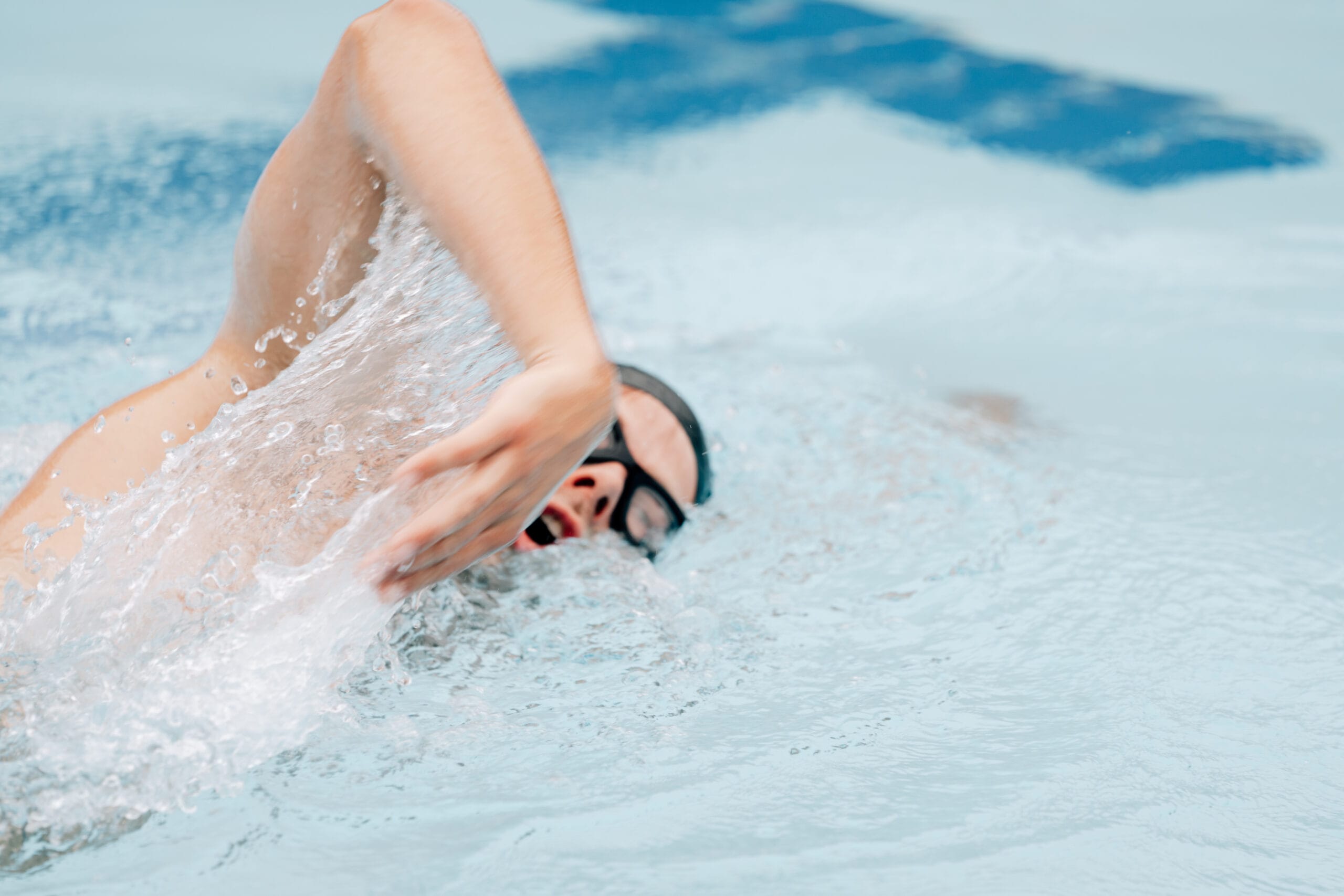How to Avoid Swimming Related Shoulder Injuries

Pure Sports Medicine
- 21 September, 2021
- orthopaedic
- Swimming
- 2 min read
Swimming is unlike other types of training. Faster levels of fitness can be achieved through cross-training such as cycling, running and weight training, but with pool fitness the only way to improve or get better is to spend time in the water.

Injury that training results in a longer time to get your pool fitness level which has a knock on effect to swimming races and triathlon timings.
There are many techniques that swimmers can use to achieve their own personal style it is really about what works for each person. That said shoulder related injuries are the most come associated with swimming.
The top 5 swimming front crawl (free style) styles that are pre-disposed toward a shoulder related injury are:
- 1 – Thumb in first: The leading hand enters the water thumb facing down, shoulder internal rotated. This is a common taught technique for young swimmers however as they become older the shoulder can become less supple and more prone to injury as a result of this movement
- 2 – Cross-over swim: Imagine a line running through the spine and down the head, the leading hand when entering the water has crossed over this line. Interesting when swimming this movement has a tendency to cause a ‘scissor kick’ with the legs, often this is picked up by instructors but not the cross-over which is the likely cause. A common teaching technique that may result in this style is when swimming instructors advise touching the top of the swimming cap or head as you go from recovery to entering the water.
- 3 – Straight arm pull: As the style suggests when in the water the arm pulls through in a straight position. This is a very common fault and results in excessive strain in the muscles trying to stabilize the shoulder
- 4 – Body rotation: Rotation is good and results in higher rates of power production during swimming. 1950’s swimmers were discouraged from body rotation, suggesting it may cause more drag and be a waste of effort, in complete contrast to this during the 1990’s some swimming styles recommend a 90 degree rotation effectively stacking the shoulder with each rotation. Both styles result in greater loading of the shoulder muscles and potential injury.
- 5 – Hand flick: At the end of pushing the arm through the water, prior to recovery position, the elbow is extended with force creating a flick motion in the hand as it is exiting the water, flicking water at the swimmer behind. This is a common technique taught to young swimmers to encourage full extension of the arm. This results in a quick internal rotation of the shoulder which can predispose swimmers to an injury of the rotator cuff.
If you have a race coming up plan out training programs so that they work smart for you. Over-training can result in injury more frequently then all of the techniques faults above, this means avoid sudden increases in training volume or intensity.
If you feel any strain or twinges in the shoulder, seek advice from a shoulder specialist who can advise you on the method to avoid loss of pool fitness and ensure you remain on track for completing your swimming events.

Advice
Over the last 20+ years our experts have helped more than 100,000 patients, but we don’t stop there. We also like to share our knowledge and insight to help people lead healthier lives, and here you will find our extensive library of advice on a variety of topics to help you do the same.
OUR ADVICE HUBS See all Advice Hubs